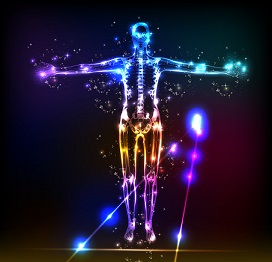Respiration is one of the seven characteristics of life. Without it, life would not be possible. Respiration is the conversion of food chemicals into waste products and a chemical which provides energy for life. There are a few different types of respiration, the main of which is aerobic respiration. The other main type of respiration is anaerobic respiration. The difference between the two is that aerobic respiration requires oxygen, whereas anaerobic respiration does not.
Basics of Respiration
Whilst quite a few different substances can begin the respiration process, for simplicity this page will just talk about glucose. You can find glucose in lots of food and is a simple sugar. When eating food, the body digests and breaks it down into smaller products. Other processes happen which cause the glucose to get into the cells of the body. Here it starts to go through the process of aerobic respiration. The first step of this process is glycolysis. After glycolysis, the chemicals enter a special organelle in the cell called a mitochondrion. Consequently, in places where lots of energy is required, the cells around will contain lots of mitochondria. The effect of this is a lot of respiration can take place. Think of the mitochondria as the powerhouse of the cell.
In the mitochondria, the chemicals continue to react. Finally, all that is left are 2 very simple chemicals, and one not so simple chemical. The two very simple chemicals are carbon dioxide and water. Adenosine Triphosphate (ATP for short) is the more complicated chemical. Therefore, a simple equation of aerobic respiration is:
ATP
Aerobic respiration is not just one reaction. Nevertheless, it is a giant serious of reactions where lots of intermediate chemicals are formed. This process creates many molecules of ATP throughout its entirety. ATP is a short but powerful source of energy for the body. It allows for lots of vital processes to take place, including muscle contraction, digestion of food, movement of vital chemicals around the body and growth and repair of the various cells in the human body. Without enough ATP, the body will start to fail and will quickly lead to death.
Importance of Oxygen in Aerobic Respiration
Without oxygen, most of the process that occurs in aerobic respiration would not be able to happen. In anaerobic respiration, the only part which could happen is glycolysis. This produces a tiny amount of ATP compared to the entirety of aerobic respiration. In fact, anaerobic respiration alone cannot produce enough ATP to sustain life. Hence, this is why oxygen is so important as, without it, enough ATP cannot be produced.
For more information on training courses, visit our “Courses” page which also includes our First Responder and First Person on Scene (FPOS) Courses. If you have any queries, don’t hesitate to contact us via our website or call us on 01206 805359.

